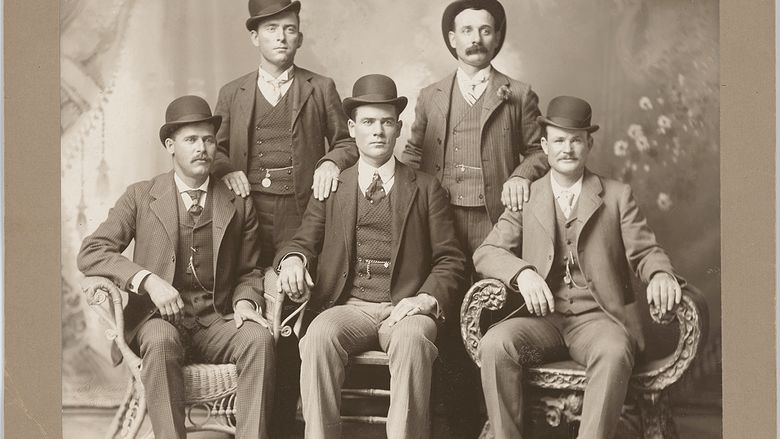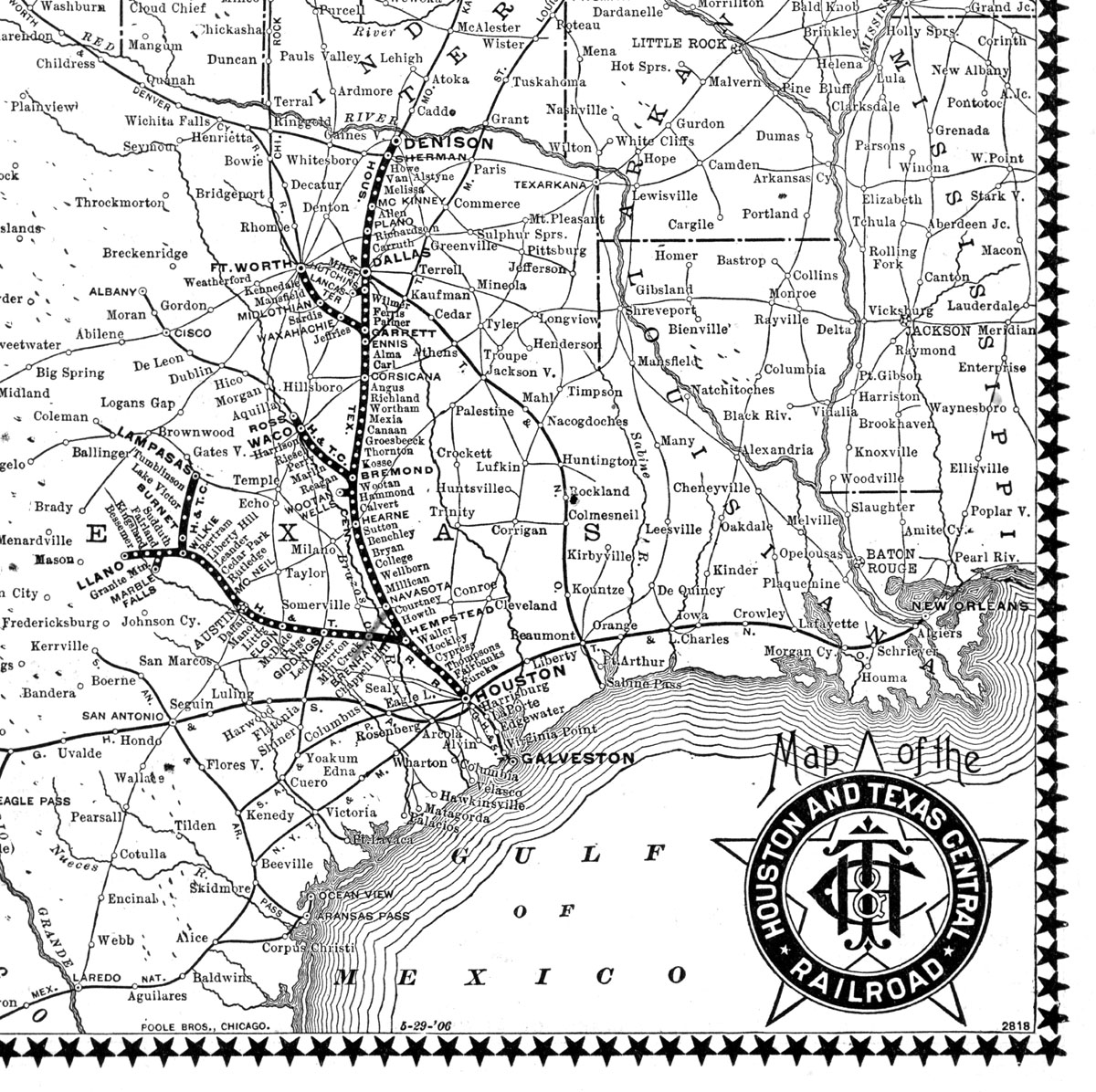The Franco-Texan Land Company was formed in 1876 in connection with the State of Texas’ desire to provide incentives for rail lines to develop railroads in Texas. The Memphis, El Paso and Pacific Railroad (MEP&PRR) had received a grant from the State of Texas in 1856 for it to create a railroad across the entire state from east to west, from a point on the Red River to El Paso. In all, the State made grants to five railroad companies around this time. MEP&PRR had been chartered about three years earlier. The original arrangement was for the railroad company to receive 640 acres of land for each mile of road and eight sections of land per mile for grading the roadbed, subject to certain conditions. The company had begun to complete its initial work by surveying land from the east to the Brazos River and had graded fifty-five to sixty-five miles of roadbed when the Civil War broke out in 1861, bringing the process to a stop. No track had been laid. Numerous deed records across North Texas refer to the MEP&PRR Survey.
Continue reading Franco-Texan Land CompanyCategory: railroad
Ben Kilpatrick and the Fort Worth Five
 (Image credit: Smithsonian Institute)
(Image credit: Smithsonian Institute)
This famous photograph, sometimes called the “Fort Worth Five,” was taken in 1900 an the Schwartz Studio in old downtown Fort Worth. Pictured are the following: left to right, front row: Harry A. Longabaugh (aka the Sundance Kid), Ben Kilpatrick (aka the Tall Texan), Robert Leroy Parker (aka Butch Cassidy); standing: Will Carver and Harvey Logan (aka Kid Curry). The photo is said to have helped authorities later to identify each of them and within twelve years, they would all be dead. Carver was killed in a shootout in Sonora, Texas the following year. Logan was killed in a shootout with a posse in Parachute, Colorado in 1904. He may have taken his own life rather than submit to being captured. Longabaugh and Parker are believed to have been killed in a shootout in Bolivia in 1908. Kilpatrick died in 1912.
The Immortal Ten
On January 22, 1927, the Associated Press headline read “Basketball Team of Baylor Victim of Grade Crossing Tragedy Near Round Rock.” The first reports indicated that of the twenty-one passengers comprised of players, coaches and guests, that there were as many as fourteen fatalities. The exact number was ten: James Clyde “Abe” Kelly, William Winchester, W. E. Murray, Merle Dudley, Sam Dillow, Jack Castellaw, L. R. “Ivey” Foster, Bob Hailey, R. L. Hannah and James Walker.
Texas and Pacific Railway
In an article under the column “Domestic Intelligence” the Galveston Daily News reported on March 3, 1871 that the Texas Pacific Railway when it was granted a federal charter to operate. The company was authorized to build a railroad via the most direct and eligible route along the 32nd Parallel from Marshall, Texas to El Paso and on to San Diego, California. With the railroad grant came a federal land grant of twenty sections of land per mile in California and Texas and forty sections of land in the territories of New Mexico and Arizona. Why Marshall, Texas? A Louisiana company, New Oleans, Baton Rouge and Vicksburg Railway Company already had been granted a charter to connect to the line at Marshall.
Texas Central Railroad
 (Image credit, ttarchive.com)
(Image credit, ttarchive.com)
The railroad that later became the Houston and Texas Central Railway dates back to 1848. It was originally called the Galveston and Red River Railroad. A charter was granted to Ebenezer Allen to build a line from Galveston north to the Red River. Construction started a few years later and by early 1856 the first two miles of the line had been completed. The name change to the Houston and Texas Central was effected in the fall of 1856 when the company was reorganized.
